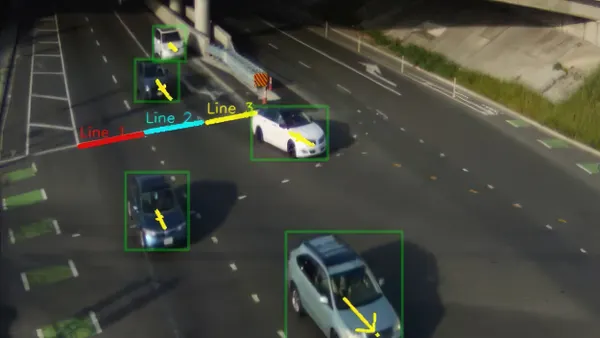Editor's Note: This piece was written by Haden Kirkpatrick, director of marketing strategy and innovation at Esurance. The opinions represented in this piece are independent of Smart Cities Dive's views.
What was once a question of how to get more electric cars on the road is increasingly becoming a question of when.
Initially, forecasts for electric vehicle (EV) sales hovered around 4% by 2025. But many of them have been significantly revised.
One study from the Edison Electric Institute has the number of EVs exceeding 7% by 2025 and skyrocketing each year after. Higher yet are Union of Concerned Scientists and Exane BNP Paribas’ forecasts, which are pegged at 10% and 11%, respectively.
What's energizing the adoption of EV at unprecedented levels? The innovative craze behind Tesla’s semi-autonomous systems is one factor, as well as the declining cost of batteries.
But to really enable the proliferation of EVs, having enough charging stations will be crucial. And in order to ensure there are enough charging stations, local measures may need to be implemented.
Currently, there are more than 17,000 public EV charging stations in the U.S., which isn’t bad. But according to a report by the U.S. Department of Energy, roughly 600,000 non-residential charging stations will be needed to meet the demand of 15 million EVs by 2030.
One city leading the "charge" in that endeavor is San Francisco. A law taking effect this year requires 10% of parking spaces in all new buildings to be installed with circuits for EV chargers. A sufficient number of charging stations isn’t the only crucial component: The ordinance also mandates that electrical infrastructure needs to supply enough power to charge 20% of those parking spaces.
Plus, the cost to actually use EV chargers will need to compete with gasoline.
This is why eight states have established pricing for EV chargers, as part of an action plan to increase the number of zero-emission vehicles on the road by 2025. In similar vein, some states are incentivizing commercial installation in the form of grants. These cover 50% of costs for Level 1 or Level 2 workplace charging stations for businesses with at least 15 employees.
Other incentives being considered by many states run the gamut of tax credits, lowered registration fees, alternative fuel technology, and rebates. The IRS even offers a tax credit ranging from $2,500 to $7,500 for battery-electric and plug-in hybrid cars. The credit phases out once the manufacturer has sold 200,000 qualified vehicles.
It’s owed to the interplay of these best practices that the biggest automakers — Ford and Volkswagen — plan to drastically expand EVs in their fleets. Volkswagen predicts EV sales to exceed that of cars with internal combustion engines in the next 15 years alone.
It’s important to note, though, that consumer interest shouldn’t be confused with people actually buying EVs. Although charging infrastructure has grown in the U.S., it’s still outpaced by countries like China, who has established a quota of 8% for EV sales this year. The lack of charging stations will continue to dissuade otherwise "interested" consumers from adopting EVs.
As McKinsey & Co. predicted in 2016, the speed at which vehicles hit our roads will depend on local regulatory measures — and cities like San Francisco that have stringent regulations and increased consumer incentives are likely to see the highest uptick. Provided that more locales and regions continue espousing many of these best practices, those predictions about the electric car may need yet another round of revisions.
Looking even farther ahead, however, it’s possible that city infrastructure will start to change on a much larger level. One plan in the works by Israeli startup ElectRoad is to install charging roads. That’s right: roads that can charge electric vehicles as they drive. In effect, it would eliminate the need for charging stations altogether.
ElectRoad’s technology uses electrical induction, where voltage is produced across an electrical conductor in a moving magnetic field. In this case, it will enable vehicles to be charged via underground wireless technology.
But in order for the technology to take off, it will need to be affordable, scalable and able to compete with plummeting battery costs. If it can do that, then factors that have long dissuaded consumers — such as cost, charging time and range of travel — could be eliminated. Given that folks would no longer have to wait at charging stations, the wireless model may be the be-all and end-all solution to EV charger infrastructure. To repeat: That’s if it happens.









